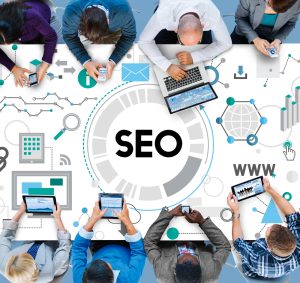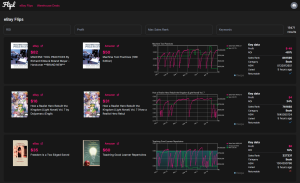Content marketing is rapidly growing, with organizations and producers continually seeking new methods to engage their audiences. While textual blogs have been a staple of Internet marketing for years, the emergence of video content has altered audience preferences. People are consuming more video content than ever before, making it critical for marketers to respond. This is where AI-enabled blog-to-video conversion comes in.
Artificial intelligence (AI) is transforming content marketing by seamlessly converting text-based material into compelling videos. Businesses may use AI blog-to-video tools to expand their content’s reach, increase engagement, and remain ahead of the competition. In this article, we’ll look at why AI-driven blog-to-video conversion is the future of content marketing and how you can use it for your brand.
The Growth of Video Content in Marketing
Video content has dominated the digital world. Platforms such as YouTube, Instagram Reels, TikTok, and Facebook Watch have made video the most popular media among users globally. According to a Wyzowl study, 91% of firms utilise video as a marketing strategy, and 89% of video marketers believe it provides a decent return on investment.
The causes for this transition are:
- Higher Engagement: Videos capture viewers’ attention faster and keep them engaged for longer than text-based content.
- Better Retention: According to studies, individuals retain 95% of a message when they view it in a video, versus only 10% while reading it.
- SEO Advantages: Google prioritises video content in search results, making it easier for businesses to rank higher.
- Social media popularity: Platforms such as Instagram and TikTok rely on video content, making it a crucial marketing tool.
With this transition, organisations that rely only on textual content risk losing audience engagement. AI blog-to-video technologies make it easy to convert blog entries into videos while keeping the material relevant and entertaining.
How Does AI-Powered Blog-to-Video Conversion Work
AI blog to video conversion solutions use powerful algorithms to analyse a blog post and generate a video based on its content. These tools utilise:
- Natural Language Processing (NLP): AI pulls essential information from blog posts and translates them into scripts.
- Text-to-Speech (TTS) Technology: AI-generated voiceovers narrate the content, increasing the video’s engagement.
- AI Video Editing: The software chooses appropriate stock pictures, animations, and transitions to create a professional-looking video.
- Customisation Options: Users can change the video’s theme, colours, and style to reflect their business identity.
The procedure is quick and easy, allowing marketers to turn their blogs into high-quality movies without needing professional video editing abilities.
Benefits of AI Blog-to-Video Conversion
1. Improved Audience Engagement
Not everyone appreciates reading lengthy content. Video reaches a larger audience, including those who prefer visual and auditory content to text. Converting blogs into videos allows brands to engage more viewers and increase retention rates.
2. Repurposing Content for Maximum ROI
AI blog-to-video tools allow businesses to repurpose their existing blog content into multiple video formats. This means:
- Blogs can be turned into YouTube videos.
- Short clips can be extracted for Instagram Reels and TikTok.
- Engaging snippets might be included in email marketing efforts.
This increases content reach and ROI without using more resources.
3. Time and Cost Efficiency
Traditional video creation is time consuming and costly. Hiring scriptwriters, voiceover artists, and video editors can strain a company’s budget. AI video technologies minimise these costs by automating the process, allowing organisations of all sizes to produce high-quality videos.
4. SEO and Ranking Benefits
Search engines prioritise video content in search results. Businesses can incorporate AI-generated movies into blog posts.
- Increase time spent on their website (an important ranking criteria).
- Increase click-through rates (CTRs).
- Rank higher in Google and YouTube searches.
5. Improved Accessibility and Inclusivity
AI-powered videos improve accessibility by including subtitles, voiceovers, and many language options. This enables marketers to reach a worldwide audience and cater to individuals with diverse learning styles.
The Use of AI Video Apps for Blog-to-Video Conversion
An AI video program streamlines the process of converting blog articles into videos. These programs offer user-friendly interfaces, customisable templates, and automated tools, allowing you to generate excellent films with no effort. Popular AI video apps employ machine learning to analyse text, recommend graphics, and create high-quality films in minutes.
Investing in an AI video software can help businesses and content creators streamline their video marketing efforts and increase audience engagement without requiring sophisticated technological expertise.
How to Begin with AI Blog-to-Video Conversion
If you’re ready to integrate AI blog-to-video conversion into your content strategy, take these steps:
- Choose the Right AI Video Tool: Look for systems that provide automation, customisation, and high-quality results.
- Select a blog post: Begin with a high-performing blog that provides relevant information.
- Customise the Video: Use AI to create a narrative, choose visuals, and record voiceovers.
- Optimise for SEO: Include relevant keywords, captions, and descriptions to improve search rankings.
- Distribute Across Platforms: Distribute the video across platforms by uploading it to YouTube, embedding it in blog posts, and sharing it on social media.
Future Trends in AI Blog-to-Video Technology
As AI advances, blog-to-video technology will likely improve much further. Several upcoming trends include:
- Real-time Video Generation: AI will get even faster, allowing for real-time video generation from text inputs.
- Hyper-Personalization: AI will customise videos for individual audiences based on their tastes, behaviour, and demographics.
- Interactive AI Videos: Future AI tools may enable consumers to interact with videos, increasing engagement.
- Multilingual Video Creation: AI will easily generate videos in different languages, broadening its worldwide impact.
Conclusion
AI blog-to-video conversion is more than simply a trend; it represents the future of content marketing. As video continues to dominate the digital landscape, organisations must react by transforming written material into engaging visual formats. AI-powered tools and AI video apps make this change simple, inexpensive, and very effective.
By incorporating AI-powered video creation into your marketing approach, you may increase audience engagement, improve SEO rankings, and expand your content’s reach. The future of content marketing is video, and AI is making it easier than ever to remain ahead of the curve.








